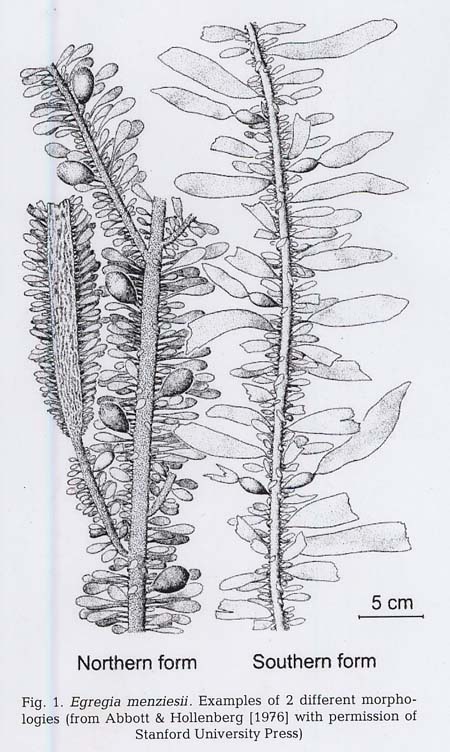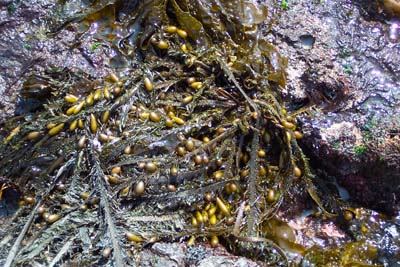
Ecology
|
|
Egregia menziesii is an important food source for many organisms in the intertidal and subtidal. Numerous marine invertebrates feed on this macroalgae including Aplysia, Haliotis kamtschatkana, and Haliotis fulgens (1). It is also home to many amphipods, isopods, and crustaceans such as kelp crabs, as well as habitat for larval invertebrates and larval fishes. E. menziesii can create dense canopies along the rocky intertidal aiding in shelter from desiccation for many of these organisms. |

Figure from Blanchette et al. 2002 (2)
Egregia menziesii varies greatly in morphology. Geographical distribution determines the general appearance of the kelp and divides the species up into northern and southern populations. The northern population occurs from Alaska to Cape Mendocino, California. The southern population is found from Cape Mendocino down to Baja, California. The northern population has a thicker, stronger rachis because of the higher wave action and colder, more nutrient rich waters of its habitat(3). Interestingly, the northern population have less alginate than the southern, which would make one expect it to be more flexible, but the northern population is actually stiffer and stronger (3).
Subtidal E. menziesii tend to be positively buoyant while intertidal are negatively buoyant. This could be attributed to smaller numbers of pneumatocysts per length of stipe of the intertidal kelp due to breakage from high wave action(2).
(1)Leighton D.L. 1971. Grazing activities of benthic invertebrates in southern California kelp beds. Nova Hedwigia. 32: 421.
(2) Blanchette, C.A., Miner B.G., Gaines S.D. 2002. Geographic variability in form, size and survival of Egregia menziesii around Point Conception, California. University of Santa Barbara, CA. Mar. Eco. Progress Series. 239: 69-82.
(3) Lobban C.S. and Harrison P.J. 1994. Seaweed Ecology and Physiology. Cambridge University Press. 1994.
